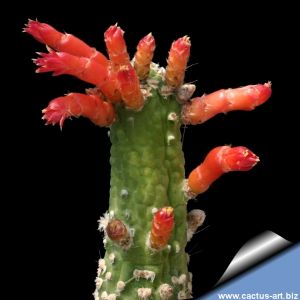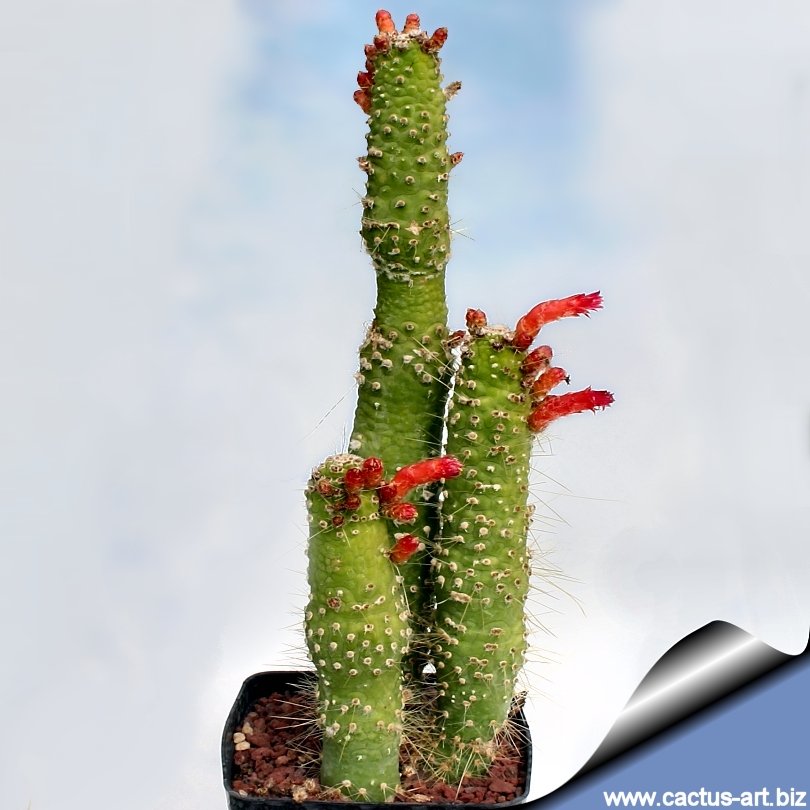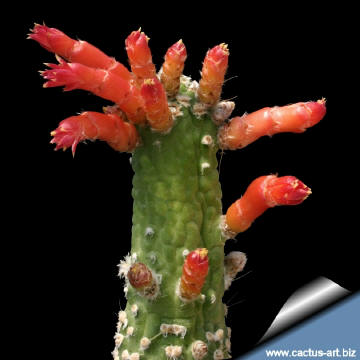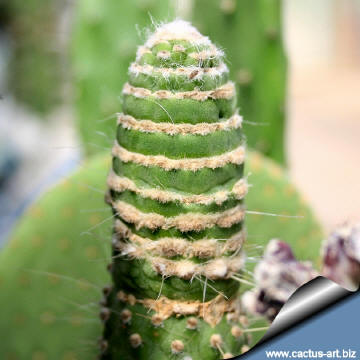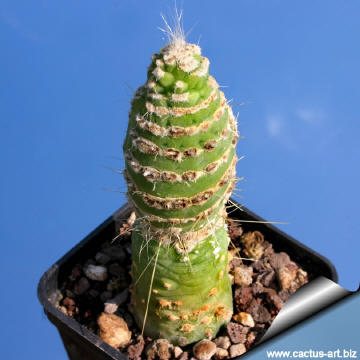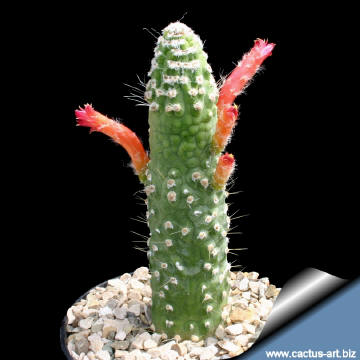-
x
Description
Strange asymmetrically tuberculate stems that grow in tall columns or twist and wind around each other like snakes. Produces lots of red tubular flowers throughout the summer Family: Cactaceae (Cactus Family) Scientific name: Cleistocactus jujuyensis f. monstrosa Origin: Garden origin (Nursery produced cultivar) Conservation status: Listed in CITES appendix 2.
| |
| Description: Columnar cactus that cluster from the base and form sculptural succulent bushes. | |
| It produces lots of unusual tube-shaped red flowers in late Spring through early Summer, which remain closed rather than spreading their petals. | |
| Cultural Practices: It is of easy culture, and requires full sun or half shade. It needs a well-drained soil mix. Water generously during the summer, but allow to dry fully before watering again. During the winter months plants should be rather kept dry. Since they are rapid growers they need plenty of space for their roots. Repotting should be done every other year, or when the plant has outgrown its pot. Propagation: It is propagated by cuttings, as its branches and offsets are readily available, If you remove an offset, remember to let it dry for a week or so, letting the wound heal (cuttings planted to soon easily rot before they can grow roots). Rooting usually occurs within 3-5 weeks. | |
| |

